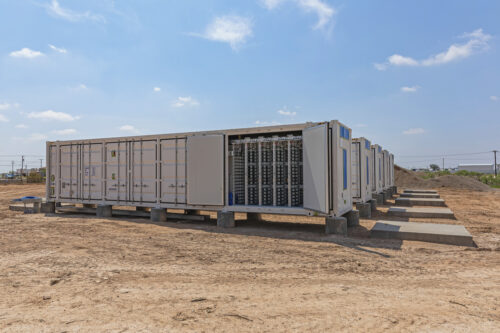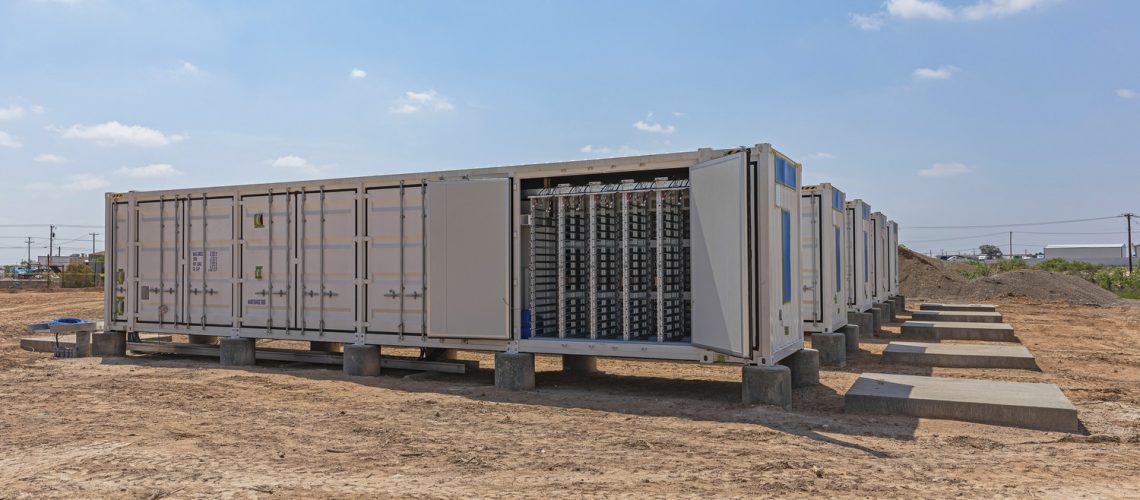
Courtesy of Burns & McDonnell
Energy storage has a unique and pivotal role to play in the transition to a low-carbon economy because it can help the electric grid accommodate more renewable energy. However, a number of barriers currently impede the process of connecting energy storage systems to the distribution grid. A new suite of actionable recommendations for regulators and utilities, launched today by a team of leading industry players, aims to change that.
The Toolkit and Guidance for the Interconnection of Energy Storage and Solar-Plus-Storage provides vetted, consensus-based solutions to eight regulatory and technical barriers to the interconnection of energy storage and solar + storage systems to the distribution grid. These recommendations are based on over a year of research and analysis by utility and industry experts. The toolkit also includes model language that utility regulators can use to update state interconnection rules to reduce the costs and time to safely interconnect energy storage and solar + storage systems. The solutions are nationally applicable and can be applied in diverse states and markets across the U.S.
Adoption of these recommended solutions can have a significant impact on how many distributed energy resources (DERs), like residential and commercial solar PV systems, can be added to the grid. For example, original research for the toolkit found that when energy storage is used to control the export of energy from DERs, the grid can host more DER capacity. In the most pronounced cases, modeling and simulation research found that using storage to limit DER export can double available DER capacity on a circuit!
The toolkit is the result of a multi-year project called “BATRIES” (Building a Technically Reliable Interconnection Evolution for Storage), supported by a cooperative agreement with the U.S. Department of Energy Solar Energy Technologies Office. The project team is led by the Interstate Renewable Energy Council (IREC) and includes the Electric Power Research Institute (EPRI), the Solar Energy Industries Association (SEIA), the California Solar & Storage Association (CALSSA), utilities New Hampshire Electric Cooperative Inc. (NHEC) and PacifiCorp, and law firm Shute, Mihaly & Weinberger, LLP (SMW).
“By modernizing the rules that govern the interconnection of energy storage systems, regulators and utilities can enable significantly more renewable energy on the distribution grid — in some cases as much as double the capacity,” said Larry Sherwood, IREC president and CEO. “They can also make the interconnection process faster, predictable, and less costly for applicants. These changes are urgently needed as more and more states target bold climate and clean energy goals; fortunately, the toolkit provides regulators with actionable and ready-to-implement guidance.”
Energy storage deployment is growing and interconnection rules have, for the most part, not yet been updated to reflect best practices on how they should be reviewed in the interconnection process. For example, ESS is unique from other DERs like solar and wind, because it can control how much energy is sent to the grid at different times. Interconnection rules historically have not recognized how storage operates differently from other electricity generators, leading to review processes that may be more likely to reject an interconnection request or require grid upgrades that may not be necessary. The toolkit solutions address critical storage interconnection issues, including (but not limited to) how to safely and reliably address inadvertent export and solutions for interconnecting limited- and non-exporting systems.
“As the industry increases deployment of variable renewable energy sources to meet state, national and international climate targets, they’ll need to ensure sufficient energy storage and grid reliability,” said Rob Chapman, EPRI Senior Vice President of Energy Delivery and Customer Solutions. “This toolkit provides key guidance and offers potential solutions to assist regulators and energy stakeholders as they address interconnection challenges throughout the clean energy transition.”
The toolkit can be accessed at https://energystorageinterconnection.org/. Over the coming year, IREC and partners will conduct extensive training and educational outreach to drive adoption of the solutions across the country. Parties interested in receiving training or more information on the toolkit can contact the partner team via the toolkit website or sign up for an informational webinar on Tuesday, April 26, 2022 from 12:00 p.m. – 1:00 p.m. Eastern Time here.
News item from IREC



